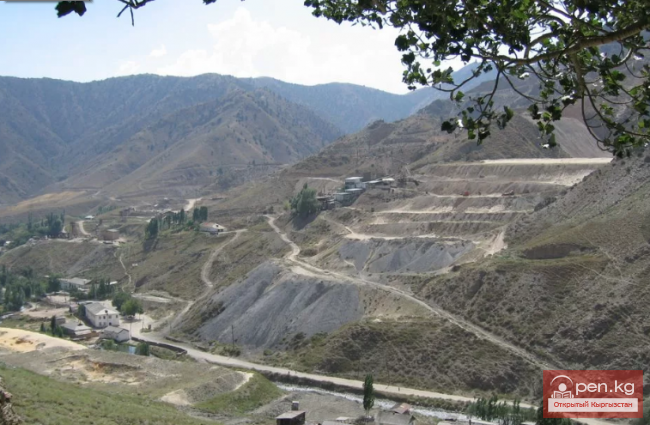A collision between two passenger cars occurred on the Bishkek—Kara-Balta highway. According to...
The village of Zheti-Tash is located in the Leilek district of the Batken region. Local residents...
The summer club in the village of Ketmen-Tobo, which has been abandoned since 1992, was once the...
Relatives of the famous statesman Turdakun Usubaliev[b] expressed their opinion on the...
In the Chuy region, in the Moscow district, a new bus route has been opened between the villages of...
In 1910, the first settlers arrived in the territory of the modern city of Orlovka, located in the...
The village of Kerkidan, located in the Aravan district of the Osh region, has an amazing history....
The village of Kyzyl-Oy, located in the Suusamyr Valley in the Jayil District of Chui Region, was...
In the Moscow district of the Chui region, in the village of Besh-Terek, the cleaning and...
In the Chuy region, in the Issyk-Ata district, there is the village of Boz-Barmak, which for a long...

Ala-Buka Village Ala-Buka Village is the administrative center in the west of Kyrgyzstan, located...
Today, November 17, a fire occurred in a transformer in the village of Kozhomkul, located in the...

Bayetovo – a high-altitude village in Central Kyrgyzstan, surrounded by the ridges and massifs of...

Massy – a village, the center of the Nooken district. It is located 60 kilometers northwest of the...
In the Jeti-Oguz district of the Issyk-Kul region, a celebration was held dedicated to the 100th...
An earthquake has been recorded in the south of Kyrgyzstan, according to information provided by...
The problem of access to clean drinking water in the village of Kosh-Bulak, located in the...

Kyzyl-Adyr means "red foothills" Kyzyl-Adyr is a village in the Talas region, the...
In Bishkek and other regions, power outages are expected. This was reported by local energy...

Belovodskoye Village is located in the west of the Chui Valley It is situated approximately 42...

Boo-Terek (until 2001 — Klyuchevka) is a village in the Bakai-Ata District of the Talas Region of...

Kara-Balta, which translates as "Black Axe," is one of the youngest cities in the Kyrgyz...
In the Batken region, the resettlement of residents whose lands will be transferred to Tajikistan...

Sosnovka Sosnovka village is located in the Jayil district of the Chui region in the northern part...

Sokuluk – a large rural settlement It is the administrative center of the Sokuluk District. This...
The regional representative office of the president announced the launch of coal sales points in...
In the capital and some regions, temporary power outages are expected, as reported by local energy...
On November 19 at 23:55, an earthquake with a magnitude of about three occurred on the border...
In Kyrgyzstan, an earthquake with a magnitude of about 3 occurred in the last 24 hours. This...
The village of Tamasha is located in the Kadamjay district of the Batken region. The population of...

Katran is a village in the Leilek District of the Batken Region of Kyrgyzstan. In 2009, its...
This morning, an earthquake occurred in the Naryn region of Kyrgyzstan, as reported by the...
In the town of Orlovka, located in the Kemin district of the Chuy region, which is 114 years old,...
In the Chui region, in the Alamudun district, the implementation of the project to create a bike...
In the Uzgen district of the Osh region, in the rural municipality of Kyzyl-Oktyabr, the asphalting...
In the Kyzyl-Zhol area of Batken, local residents showed support for their neighbor Imarbek Rajapov...
In the southern part of Bishkek, the construction of a new road is planned, which will connect the...
Residents of the village of Novopokrovka, located in the Ysyk-Ata district, contacted the...

Chayek – Agricultural Settlement The village of Chayek is the center of the Jumgal district in the...
A resident of Kara-Balta shared charming autumn landscapes captured in photographs, reports Turmush...
Last night, an earthquake with a magnitude of 3.5 was recorded in Kyrgyzstan, according to...
Today, November 20, an earthquake with a magnitude of 4.1 occurred in the Jalal-Abad region....
From November 11 to 14, a tournament in freestyle and women's wrestling among young wrestlers...